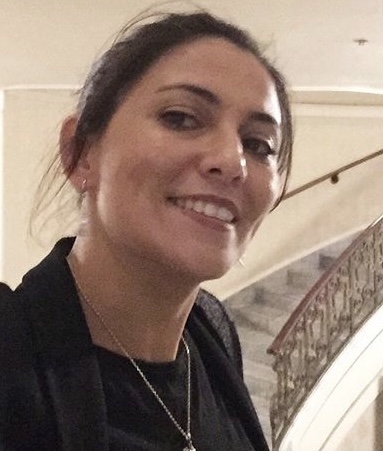Enneagram/EnneaCONNECTOM
You can read our story about how we get started

Story Behind The ENNEACONNECTOM
George Gurdjieff, the founder of the modern enneagram, stated that to be fully human, to be able to access all one’s facilities, you had to have all three centers of intelligence – head, heart, gut – present. Gurdjieff’s most prominent student, P.D. Ouespensky quoted him, “In order to understand the enneagram it must be thought of as in motion, as moving. A motionless enneagram is a dead symbol, the living symbol is in motion.”
Contrary to popular notion in the enneagram world, you are not an enneagram type.
You do, however, have predictable neural pathways that have been formed in your brain that keep you acting under stress in fixated patterns that usually constellate around one of nine enneagram types or their wings. Without all three centers firing, man is but a machine. The alternative is a fully-empowered human. The enneagram gives us a map for human beings to explore and ignite their highest potential and lives.
When Dr, Ozgu Hafizoglu found the enneagram resonated with her PhD research, she was excited to find that much of Gurdjieff’s influence came from Sufi masters during his time in Istanbul in her native Turkey. Dr. Hafizoglu has written extensively about Turkey’s early influence in combining the mythos world of ancient Greece to the logos world of ancient Rome, and how the two came together at the Laodecia medical school
Enneacenters was created to a) continue study of the neuroscience of the enneagram, and b) use the enneagram system and model to free people from their conditioned fixated patterns.
We agree that enneagram founder Oscar Ichazo was right, we are not just one enneagram type, but we have fixation and extension energy in all three centers, explaining how the triune brain operates. We have developed a test for Dr. Hafizoglu to continue her postdoctoral research on the neuroscience of the enneagram. With her preliminary research, we have created theories on how each of the nine types operates and processes information in both healthy cognitive processing as well as in situations where past and current trauma pushes the person back into conditioned neuropathways.
Please take our test to continue our research on the neuroscience of the enneagram.
We believe the enneagram holds the key to unlocking many of the brain’s secrets in a way that can help cure many disabilities, from dyslexia to dementia, from autism and Asbergers and all forms of PTSD. With the enneagram as a model, it can be easier to help diagnose broader psychological conditions from generalized anxiety disorder to borderline personality disorder to how someone votes in an election. Fundamental to all of this is understanding the three centers and then the nine personality types.
Neuroscience comes down to a very precise mix of neurons, axons and glia cells, and the entire process is dependent on electrical and chemical reactions in the brain, and our research on the enneagram can provide a map to clinicians and psychologists trying to help their clients.
Thank you in advance for helping refine our study of the brain by taking our test.
Cognıtive Scientist

Dr. Ozgu Hafizoglu
Dr. Ozgu Hafizoglu uses her PhD research in cognitive science along with her background in human engineering to create brain maps tied to the three centers and nine enneagram types. Her masters degree in industrial design was built on her dissertation on human anatomy, physical characteristics, biomechanics, anthropometrics of the human body. Her bachelors in architecture and masters in design drove her interest in cognitive science, which has become her life’s work. She sees how the human mind and how unraveling one’s motivations can support a sustainable planet.
After completing her PhD research, Dr. Ozgu found the enneagram and its three “brains” model (head, heart, gut) as the most accurate measure of personality typology available. In exploring the enneagram and its relationship to the dynamic of our electro-chemical brain and it’s patterned processing algorithm, Dr. Ozgu correlated the enneagram to her PhD research and found it to be the best and most sophisticated tool among the personality tests. Her plan is to further her cognitive science research on the enneagram using neuroscience to prove her theories on how each type operates. She plans to create programs to help leaders, students and clients understand their motivations, fixations, addictions and shadow tendencies and then engage the virtues and holy ideas of the type to encourage their highest selves.
Currently, Dr. Ozgu is an assistant professor at Pamukkale University and as an adjunct professor at the University of Economics. Dr. Ozgu earned her bachelors (architecture) masters (design) and PhD from the Institute of Technology in Izmir, Turkey. Her doctorate thesis on experienced-based cognitive science has been cited over 110 times in Science Direct. Her research on the brain and its hard-wired inner workings led her to personality-typing testing and how each type’s brain operates in a cognitive system. Her intention is to use neuroscience to prove her theories on enneagram typing and the inner workings of the brain.
When Dr, Ozgu Hafizoglu found the enneagram resonated with her PhD research, she was excited to find that much of Gurdjieff’s influence came from Sufi masters during his time in Istanbul in her native Turkey. Dr. Hafizoglu has written extensively about Turkey’s early influence in combining the mythos world of ancient Greece to the logos world of ancient Rome, and how the two came together at the Laodecia medical school.
